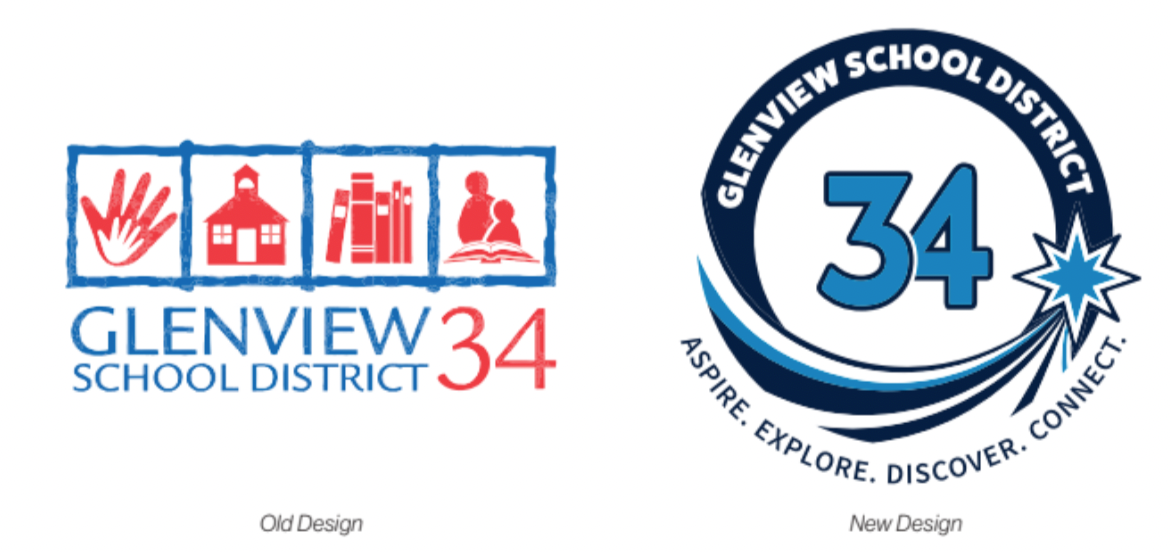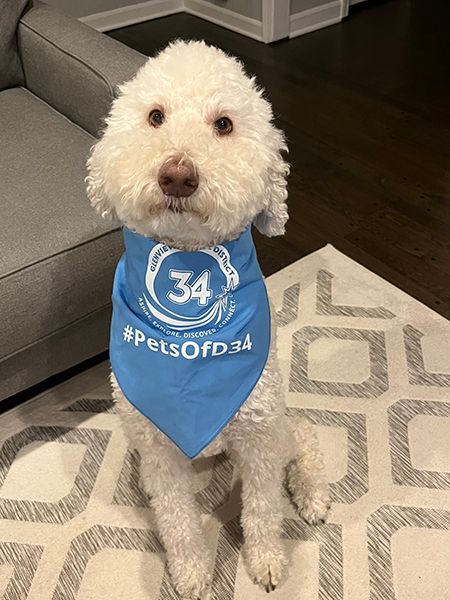Cathy Kedidjian: Forging Your District's Path
Guest writer Cathy Kedjidjian, APR, is the executive director of communications and strategic planning for Glenview School District 34 in Illinois. She is also the 2022-23 president of NSPRA. Here, she shares her deep insights into school communications and the strategic planning process.

I’m passionate about strategic planning. It’s part of my title, and it’s ingrained in my professional beliefs and values. So I’m fortunate to have started in Glenview District 34 in August 2018, just as the district was launching their first strategic planning process in many years.
When Superintendent Dr. Dane Delli arrived in 2017, Glenview was struggling. Staff morale was waning, leadership transitions were occurring left and right, programs were behind the times, and the buildings were in disrepair—all because there wasn’t a clear path for the district or anyone to guide it.
In his first year, Dr. Delli set the stage with the school board to begin strategic planning. And on my first day as director of communications and strategic planning, my first order of business was to develop staff, parent, student, and community surveys. In order to stay on schedule, I needed to send those surveys out by the end of that week. I was not going to be the one to throw the process off course, so I dug in, created the surveys, and sent them out. (It might have been Friday after 5 p.m., but they still got out on time!)
I love surveys. But before I send a new one out, I remind myself and my leadership colleagues of one important motto: Don’t ask if you won’t act. Are we ready for the results? Even if they’re not at all what we’re expecting, will we share that data back to the community and do something with it?
In our situation, the point was to act, to use whatever knowledge and insight we could gain to put Glenview District 34 on a forward, upward path. The information I collected from those surveys, from research into our student and staff demographics, and from student achievement data was unbelievably useful in guiding our strategic plan. It was the best education a school leader could possibly gain about their organization and community—in the shortest amount of time. As a cabinet team, we pored over the data to understand the current state of the district. We would use this information to paint a picture for the community and develop a map to our future. At our meetings, as we looked at the data, we had those “aha” moments together.
This process cemented our leadership team in common understanding and in deep friendship. We speak the same language, formed from our discussions around our district, and are a stronger team—and better leaders—because of the strategic planning process.
The Value of Input
The data we collected was key, but as great as it was, it was only the second-most useful part of our strategic planning. As always, people and relationships were priority number one. More than 40 administrators, teachers, staff, parents, and community members were recruited to form our strategic planning task force. Looking at the data and other input from the community at large, this group guided the development of the final strategic plan.
I received a great gift in hearing from and getting to know the most invested and influential stakeholders in our community. To this day, I’m tightly connected with them. Involved parents are my go-to for insider information when I need it, like when chaos breaks out in a Facebook parent group or on Nextdoor. In fact, most of the time, I don’t have to ask them what’s going on—they come to me. And of course, there are our passionate teachers. I can walk into their classrooms and know that I’m going to get not only great pictures, but also great hugs. And, because we worked together to develop our vision for the district’s future, when I need them for a project that clarifies that vision, they are eager to help.
Through half a dozen meetings over five months, our team had deep conversations, shared information with the community, and got input from them in return. Then, we came back to process, reflect, and have deep conversations about the feedback we had gained.
In early 2019, our strategic planning team presented our final plan to the Board of Education, and the board approved it. Afterward, everything in the district felt different almost immediately. The new plan’s vision, values, and goals resonated—but especially its mission:

Strategic Plan to Rebrand
With a clear vision for our path forward, we needed to make sure everything in our branding aligned with our new strategic plan before it went into effect. For example, our old Glenview District 34 logo didn’t fit into our new vision.
After all the research and community input it took to develop a plan that reflected the community’s wishes and vision for the district, we needed to reflect that vision back to them in everything we did—including our brand. We heard the words “aspire,” “explore,” “discover,” and “connect” throughout hallways, in classrooms, and on playgrounds, but we didn’t see them—or really feel them—in our brand.
A strong brand is more than a logo. It’s a relationship, a reflection of each stakeholder. When a community sees their input reflected in their brand, it builds connections and trust. So our new strategic plan led immediately to a rebrand; the two are completely intertwined in Glenview District 34.
Our official launch of the plan and the rebrand to the community would be on the last day of school in June 2019. Leading up to that, we had a thorough rebranding process in the spring with a great deal of input (more surveys!) from staff, students, parents, and the community. During this process, we built excitement about the new brand and our new logo.
When it was time to unveil the logo, we kept it directly tied to the strategic plan. We chose to share the revamped branding with staff first during our all-district meeting, which we call our closing institute day. It was the last day of the school year for staff, so it was a big event.
The plan and the mission—Aspire. Explore. Discover. Connect.—were already becoming familiar to staff. As a lead-up to the institute day, we asked them all to submit what they aspired to do in the next school year—for themselves, for their students, and for each other. As an incentive, every person who submitted their aspiration would receive swag branded with our new, yet-to-be-seen logo.
We tweeted out every submission we received, and when closing institute day finally came, we projected our Twitter feed with our one-day hashtag #AspireD34 on a big screen. As people entered the meeting, they saw their aspirations and those of their colleagues.

After Dr. Delli and our board president gave brief, uplifting speeches, we showed a video featuring students and staff proudly repeating our new mission statement: Aspire. Explore. Discover. Connect. This was interwoven with the story of our strategic plan, explaining the comprehensive community engagement process used to develop it and outlining its components. At the end of the video was the big reveal: our brand-new logo. The “oohs” and “ahhs” from our more than 700 staff members as soon as the new logo hit the screen were music to my ears.
The swag was a huge hit as well—so successful that our teachers asked if there was a way to buy extra items. Thus our new online store D34Swag.com was born!
While our schools each have their own mascots, logos, and individual cultures, everyone truly feels connected to the district as a whole—even students, who typically only have deep connections with their own schools. Last fall, we had a booth at the Glenview Farmers Market with a district-branded tablecloth. A Lyon Elementary School student walked by, saw the new district logo, and excitedly said to his mom, ”That’s my school!”
We wear and share our brand with great pride throughout our buildings and online and everywhere outside of school. Even our pets can be spotted wearing D34 swag.
That’s why we are recognized and welcomed wherever we go throughout the community. That recognition and respect is helpful as we work, like all districts nationwide, to recruit essential staff like substitutes and teaching assistants.

The Path to Referendum Success
Our new strategic plan also gave clear direction that we needed to address our facility deficiencies and gaps in programming. In the plan’s goal area titled “Student Success and Well-Being,” a strategy directed us to “provide opportunities for the earliest learners to establish a strong academic and social-emotional foundation.” Another strategy, under the plan’s “Resource Stewardship” goal, said we must “address aging facilities and deferred maintenance to provide safe, clean, and well-maintained facilities.”
Remember, this was a strategic plan developed and directed by our community—so it was no surprise that we had incredible support for the referendum we then passed on March 17, 2020. This allowed construction that would make space for full-day kindergarten, as well as renovations in all our buildings that will impact the academic and social-emotional experiences of every student for generations to come.
We shared the progress of our referendum construction with our community—in branded communication, of course. At ribbon cuttings at the start of last school year, many members of our strategic planning task force—who, no surprise, also got involved in the referendum task force and the Vote Yes citizens group—were part of the celebration. They have been on this path with us every step of the way.
The Road Ahead
Our current strategic plan runs through the 2023-24 school year, so we launch our next strategic planning process in the fall of 2023. We can’t yet know our direction; the process determines the path, after all. However, we do know that Glenview District 34 is facing the same big issues that all districts are grappling with. We’re working to support the mental health and well-being of our staff, students, and families. We’re trying to address the local impact of nationwide teacher and support staff shortages. We’re attempting to increase civil discourse and find common ground throughout our communities, particularly when discussing diversity, equity, and inclusion. Our next strategic plan will provide a framework for us to skillfully navigate these issues in a way that is best for our students and their success as they move through and beyond our school system.
The planning process, of course, will include surveys, data review, and community engagement sessions—and plenty of “aha” moments as well. But we are certain that staff, students, families, and other stakeholders will generously share their perspectives because they trust us. Last time around, we asked, we acted, and our community saw and felt the results. Now we have an opportunity to strengthen that trust, bringing in new faces and perspectives—new friends who will join us on our path forward.
Subscribe below to stay connected with SchoolCEO!


